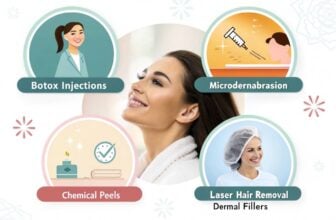Have you ever wondered what keeps your vision crystal clear and your eyes feeling vibrant every day? From the vibrant hues of your favorite fruits to the wholesome crunch of leafy greens, the foods you consume play a pivotal role in maintaining optimal eye health.
Dive into the world of essential nutrients that not only enhance your eyesight but also shield your eyes from age-related challenges. Let’s explore the delicious path to a sharper, healthier vision!
Nutrients for Healthy Eyes
We count on our eyes daily, so keeping them healthy is a big deal. Let’s dive into the vitamins, minerals, and antioxidants that keep our peepers in tip-top shape.
Essential Vitamins and Minerals
Our eyes need certain nutrients to stay sharp and fend off those pesky diseases that come with getting older. Here’s the skinny on what your eyes are hungry for:
- Vitamin A: You can’t see in the dark without this one! It’s part of the team that helps you see in dim light. Skip it, and you’re looking at night blindness and dry eyes Medical News Today.
- Vitamin C: Famous for its antioxidant skillset, this vitamin helps keep cataracts and age-related funky vision stuff away American Optometric Association.
- Vitamin E: Gives a little muscle to fatty acids, helping your eyes stay healthier.
- Zinc: This one’s like the mailman—it moves vitamin A from your liver to your eyes, boosting melanin, the eye’s sunblock.
| Nutrient | Perks | Food Picks |
|---|---|---|
| Vitamin A | Helps with darkness lurking, avoids night blindness | Carrots, sweet potatoes, spinach |
| Vitamin C | Slashes cataracts, keeps macular degeneration at bay | Oranges, strawberries, bell peppers |
| Vitamin E | Guards the eye’s fatty parts | Almonds, sunflower seeds, avocados |
| Zinc | Creates eye-friendly melanin | Oysters, beef, chickpeas |
Catch more about keeping your eyes vitamin-happy in our best vitamins for eye health article.
Importance of Antioxidants
Antioxidants are the bodyguards against harmful stuff trying to mess with your eyes. They’re champs at taking care of the retina, lens, and the whole eye package:
- Lutein and Zeaxanthin: Camped out in the retina, they protect, filtering nasty blue light and keeping damage at bay Eye Clinic London.
- Beta-Carotene: A potential vitamin A maker, beta-carotene kicks night vision up a notch and boosts overall eye health. Think carrots and sweet potatoes, those color-pop foods.
- Omega-3 Fatty Acids: Essential for your retinas and visual growth, these oils also wave goodbye to dry eyes NCBI Bookshelf.
Do you have a thirst for more antioxidants giving your eyes a boost? Check out our eye health and nutrition and eye health supplements sections.
When you sprinkle these good guys into your chow, your eyes will stay sharp and shining. Got an itch for more savvy info on peeper care? Peek at our eye health tips and natural remedies for eye health.
Vitamin C Rich Foods
Role in Eye Health
Vitamin C is a real MVP for your peepers, playing a key part in keeping them in tip-top shape. Found in high amounts in the aqueous humor (the fluid in front of your eye lenses), it acts like a shield against stuff that could mess with your vision, like harmful UV rays and oxidative stress—two big culprits behind cataracts (Johns Hopkins Medicine). And that’s just scratching the surface. Vitamin C also keeps those tiny blood vessels in your eyes nice and healthy, lowering your risk of cataract woes and maybe even giving age-related macular degeneration a run for its money.
Since your body doesn’t whip up vitamin C on its own, it’s on you to make sure it’s on your plate! Perfectly crucial for all folks, whether it’s the daily grind of digital eye strain, parents staying vigilant about children’s eye health, or older adults thinking about those looming age-related eye changes.
Food Sources for Vitamin C
Your menu options are endless with so many yummy and vitamin C-packed foods ready to jazz up your meals. Here’s a list that might surprise you:
- Citrus Fruits: Orange slices in the morning or a squeeze of lime over dinner—citrusy goodness is the way to go.
- Bell Peppers: Munching on crisp red peppers is great for keeping those eye blood vessels happy and cataracts at bay.
- Strawberries: These sweet, juicy berries are about as fun to eat as they are beneficial.
- Tomatoes: Diced in salsa or cooked into sauce, tomatoes make it easy to get that vitamin C hit.
- Leafy Greens: Spinach and kale sneak vitamin C along with vision boosters like lutein and zeaxanthin.
- Tropical Fruits: Mangoes, pineapples, and papayas—just talking about them might make you feel like you’re on vacation.
- Cruciferous Vegetables: Veggies like broccoli and Brussels sprouts are powerhouses of vitamin C.
| Food Item | Vitamin C Content (mg) |
|---|---|
| Oranges (1 medium) | 70 |
| Red Bell Peppers (1 cup, chopped) | 190 |
| Strawberries (1 cup, halves) | 85 |
| Tomatoes (1 medium) | 20 |
| Kale (1 cup, raw) | 80 |
| Mango (1 medium) | 120 |
| Broccoli (1 cup, cooked) | 90 |
| Brussels Sprouts (1 cup, cooked) | 75 |
Bring these onto your plate and you’ll be dialing up your eye health game. Curious about more ways to power up your eyesight with food? Jump into our pages on eye health tips and eye health and nutrition. They’re packed with nuggets of wisdom to cater to whatever your eyes need.
Vitamin E Sources
Benefits of Eye Health
Vitamin E is a handy buddy when it comes to keeping your peepers in tip-top shape. This superhero vitamin works behind the scenes to shield important fatty acids from turning into pesky worst-in-the-world oxidized forms, helping your eyes indirectly. For folks glued to screens or worried about getting older (we get it, aging isn’t all sunshine and rainbows), adding some vitamin E to your plate is like giving your eyes a friendly high-five.
When teamed up with other nutrients, vitamin E packs quite the punch in slowing down age-related macular degeneration (AMD) and might even give cataracts a run for their money. By keeping those eye cells in fighting form, vitamin E does its part to help keep your vision crisp and your eye health in the green zone.
Food Rich in Vitamin E
Feeding good food to your body is like giving it a warm hug, and when those foods are packed with vitamin E, your eyes join in that cozy feeling. Check out this shortlist of yumminess that also gives your vision a little boost:
| Food Item | Vitamin E (mg per 100g) |
|---|---|
| Sunflower Seeds | 35.17 |
| Almonds | 25.63 |
| Hazelnuts | 15 |
| Avocados | 2.07 |
| Spinach | 2.1 |
Got kiddos with screen eyes or are you looking for a natural fix for this aging thing? These snacks are for you:
- Sunflower Seeds and Nuts: Super crunchy and oh-so-tasty, sunflower seeds and almonds shower you with vitamin E goodness. Toss ’em in salads, mix ’em with yogurt, or just grab a handful when on the go.
- Avocados: Ah, the glory of smashed avocados on toast or blended into a smoothie. They don’t just taste good; they bring in healthy fats and vitamin E to help your body thank you later.
- Spinach: Get those greens in! This leafy wonder is packed with nutrients, vitamin E included. Toss it in a salad, blend it into a smoothie, or just lightly steam it—your eyes will thank you.
Caring for your eyes doesn’t have to be a puzzle. Swing by our eye health tips or dig into natural remedies for eye health for more ways to keep your vision sharp and your eyes smiling.
Importance of Lutein and Zeaxanthin
Role in Protecting Eyes
Lutein and zeaxanthin are like the bodyguards of your eyes, hanging out in green leafy veggies. These nutrients act as superheroes for your peepers by reducing oxidative damage. Research hints that getting around 6 milligrams daily of these can keep age-related macular degeneration and glaucoma at bay.
These antioxidants are especially kind to the macula, which handles your clear, central vision. Think of them as natural sunglasses, shielding eyes from nasty UV rays and minimizing the risk of macular degeneration and cataracts.
Food Sources for Lutein and Zeaxanthin
Want enough lutein and zeaxanthin? Munch on these foods—they’re yummy and great for overall eye wellness.
| Food Source | Lutein & Zeaxanthin Content (mg per serving) |
|---|---|
| Kale (1 cup cooked) | 23.8 |
| Spinach (1 cup) | 20.4 |
| Broccoli (1 cup) | 1.7 |
| Peas (1 cup) | 1.2 |
| Romaine Lettuce | 1.1 |
| Eggs (1 large) | 0.3 |
Sources: American Academy of Ophthalmology and Eye Clinic London.
Leafy greens like kale and spinach top the chart for lutein and zeaxanthin. Also, veggies like collard turnip greens, and peas are great choices too. Eggs, with their yolks, sneak in these nutrients and can mix into almost any meal.
For parents diving into children’s eye health, tossing these into your kids’ plates is a solid start to safeguarding their vision. For folks dealing with digital eye strain from screens, these nutrients can help ease that eye fatigue. Seniors eyeing age-related issues could really gain from these antioxidants, lending a hand against problems like AMD and cataracts.
If you’re curious about eye-friendly nutrients, check out our piece on eye health and nutrition. Thinking about supplements? Visit our guide on eye health supplements.
Omega-3 Fatty Acids for Eye Health
Looking after our peepers is a big deal, and omega-3 fatty acids are like the secret sauce to doing just that. These are those good-for-you fats that keep your eyes sparkling and sharp by lending a hand in retinal health, steering clear of pesky eye problems.
Impact on Vision
In the eye health department, omega-3s, especially DHA (docosahexaenoic acid) and EPA (eicosapentaenoic acid), are as important as a good nap after a long day. The retina enjoys a good dose of these fatty acids as DHA flexes its muscles, boosting cell membranes to help them stay in tip-top shape for clear vision.
These omega-3s aren’t just freeloaders. They pitch in to fend off age-related setbacks like macular degeneration and eye adversaries like glaucoma. Dry eyes? They hate omega-3s! Whether you’re a screen warrior or rocking the golden years, this nutrient reduces your chances of feeling like you have sand in your eyes. Even animals get the memo; their diets with DHA showed less retinal wear and tear (NCBI Bookshelf).
Foods High in Omega-3s
Eating omega-3-rich foods is like giving your eyes a high five. Whether you’re a techie fighting digital glare, a senior fretting over the age effect on eyes, or a parent wanting the best for your kids’ vision, this is your answer.
| Food Source | Omega-3 Fatty Acids (mg/100g) |
|---|---|
| Salmon | 1,280 |
| Tuna | 1,690 |
| Trout | 1,200 |
| Walnuts | 2,570 |
| Chia Seeds | 4,915 |
| Flaxseeds | 22,813 |
Food numbers from WebMD.
Fish like salmon, tuna, and trout are swimming in DHA and EPA. For the plant lovers, munch on walnuts, chia seeds, and flaxseeds. They’ve got ALA, a kind of omega-3 that can partly transform into DHA and EPA. Mix these goodies into your meals, and your eyes will thank you, as well as the rest of your body.
Want more advice on what to munch for happy eyes? Peek at our eye health tips and natural remedies for eye health. Thinking of supplements? We have a rundown on eye health supplements that’ll keep your nutrient levels on point.
For extra reading on keeping those eyes in shape with what you eat, check out our insights on how to improve eye health.
Beta-Carotene for Vision
Beta-carotene, a key player in the eye health game, gets converted into vitamin A, which is a superhero for your eyes.
Benefits of Beta-Carotene
Getting down to the nitty-gritty, beta-carotene is a must-have for keeping your peepers in check:
- Stops Dry Eyes and Night Blindness: Vitamin A, born from beta-carotene, keeps your eyes from feeling like you’ve walked through the Sahara and helps you see when it’s as dark as a poorly lit horror movie.
- Puts the Brakes on Macular Degeneration: Eating beta-carotene can slow down the wear and tear on your eyes’ retinas, which is what keeps you seeing that beautiful sunset instead of a blur.
- Keeps Your Retina in Tip-Top Shape: With carotenoids like beta-carotene hanging out in the retina, you can actually see what that light is shining on.
Food Sources of Beta-Carotene
Orange is the new green when it comes to foods packed with beta-carotene. Eating these will keep your eyes saying “thank you”:
| Food Source | Beta-Carotene Content (mcg) |
|---|---|
| Carrots (1 cup, raw) | 8,285 |
| Sweet Potatoes (1 medium) | 18,443 |
| Butternut Squash (1 cup, cooked) | 11,343 |
| Cantaloupe (1 cup, diced) | 3,580 |
| Mangos (1 cup, sliced) | 2,240 |
| Apricots (1 cup, sliced) | 1,346 |
Data lovingly shared by WebMD and the American Academy of Ophthalmology
Carrots: They’re not just for bunnies! Carrots are packed with beta-carotene, keeping the surface of your eyes free from infections.
Sweet Potatoes and Butternut Squash: These shout “beta-carotene overload!” They also throw in vitamins C and E to keep your eyes healthy.
Cantaloupe, Mangoes, and Apricots: Sweet and tasty, these fruits are also full of beta-carotene, helping you see in the dark and adjust to lower light settings.
Chowing down on these tasty, beta-carotene-full foods can go a long way in keeping your vision sharp and your eyes healthy. For more tips and tricks, mosey on over to our pages on natural remedies for eye health and eye health tips.
Additional Herbs and Foods for Eye Health
Who doesn’t want to see the world in all its glorious detail, right? Here we’re dishing out the deets on a couple of natural wonders that your eyes will thank you for – bilberry and eyebright.
Bilberry and Its Benefits
So, bilberry. Imagine it like a blueberry’s cool cousin that’s all about keeping your peepers in tip-top shape. Packed with anthocyanins, these natural superheroes swoop in to save your eyes from living on the edge of oxidative stress city. Quick science tidbit: they combat those pesky free radicals ready to tag-team your eyesight into oblivion.
These goodies help blood flow smoothly through those tiny eye vessels, cutting down digital eye strain, which let’s be honest, is happening all too often. They are also pals with seniors, reducing vision issues tagged “senior moments,” and get on famously with folks who are worried about family eye troubles.
Eat it fresh, dried, or grab it in a supplement but get bilberry into that diet of yours. For the lowdown on eye health supplements, swing by our eye health supplements guide.
Eyebright for Eye Strain Relief
Now, eyebright. Besides sounding like a spell from a wizarding world, this little herb is no stranger to the game. Been around the block and helped loads with eye fatigue and soreness, especially for those marathon screen-staring sessions. Say goodbye to the eye redness and dryness blues.
It’s quite a flexible friend too. Brew it up as tea, pop a supplement, or try those fancy eye drops. Perfect fit for parents digging into kids’ eye health or lens wearers who feel like they’ve been staring at the sun. Eyebright is their go-to buddy for some much-needed eye TLC.
Mixing these powerhouses into your life, alongside a spread of nutrient-rich foods, is the way to keep your vision sharp and sassy. For more eye-friendly food advice, drop by our healthy diet tips for more scoop. And hey, don’t miss our natural remedies for eye health for a treasure trove of eye-pleasing tricks.
Tips for Keeping Your Eyes in Top Shape
Taking care of your eyes is a must-do for folks of all ages—from the little ones to the golden oldies. Here’s how you can look after your peepers through smart eating and living choices.
Chow Down on Eye-Friendly Grub
What you eat can seriously help keep your vision sharp and fend off those pesky eye problems. Check out these goodies that give your eyes a boost.
- Get Your Vitamin C: Think raw red peppers, strawberries, papayas, bok choy, and cauliflower. Vitamin C is like a best friend for your blood vessels and might just keep those cataracts at bay (WebMD).
- Craving Vitamin E: Munch on almonds, sunflower seeds, and hazelnuts. They’ve got Vitamin E, which helps fend off damage to your eyes from nasty free radicals.
- Load Up on Lutein and Zeaxanthin: Kale, spinach, and collards are your go-to greens. They pack a punch in shielding your eyes from blue light and warding off macular degeneration (American Optometric Association).
- Omega-3 Love: Dive into some salmon, mackerel, or sardines. These fish bring omega-3s to the party, keeping your eyes healthy and maybe even helping out with those annoyingly dry eyes.
- Beta-Carotene Boost: Carrots, sweet potatoes, and pumpkins are stacked with beta-carotene, which turns into Vitamin A, crucial for seeing in dim light (Johns Hopkins Medicine)
| Nutrient | Perks | Good Eats |
|---|---|---|
| Vitamin C | Supports blood vessels, fends off cataracts | Red peppers, strawberries, papayas |
| Vitamin E | Protects against damage | Almonds, sunflower seeds |
| Lutein and Zeaxanthin | The key for night vision | Kale, spinach |
| Omega-3s | Helps prevent dry eyes | Salmon, sardines |
| Beta-Carotene | The key to night vision | Carrots, sweet potatoes |
Need more on munchies that help out your eyes? Head over to our article on nutrition for healthy eyes.
Lifestyle Choices for Happy Eyes
Beyond eating right, making some smart lifestyle tweaks can keep your vision sharp and your eyes feeling great.
- Stay on Top of Eye Exams: Make it a point to see an eye expert yearly. They’ll catch any sneaky eye issues before they become a big deal.
- Rock Those Sunglasses: Pick shades that block 99% to 100% of UV-A and UV-B rays to keep your eyes safe from those sneaky ultraviolet nasties.
- Cut Down Screen Time: Give your eyes a break with the 20-20-20 rule—every 20 minutes, stare off at something 20 feet away for about 20 seconds. It helps ward off the digital strain.
- Keep Hydrated: Drink up, folks! Enough water means your eyes stay comfy and hydrated, cutting down on dryness.
- Kick the Smoking Habit: Smoking’s a nasty business, increasing the risk of cataracts and messing with your optic nerve. Dropping the habit means healthier eyes in the long run.
- Light It Up Right: Good lighting while reading or working can save you from eye strain and make everything more comfortable.
- Exercise Those Eyes: Blinking drills and palm covering are simple ways to ease stress in your eyes and help them chill (eye exercises for relaxation).
Following these eating and lifestyle tips can beef up your vision’s defense system. For the full scoop on eye care, check out our guide on ways to protect your eyes.
Conclusion
Taking charge of your eye health is both delicious and rewarding. By incorporating a variety of vitamin-rich foods like carrots, spinach, and salmon into your diet, you provide your eyes with the essential nutrients they need to stay sharp and resilient.
Antioxidants like lutein and zeaxanthin act as natural protectors, while omega-3 fatty acids and beta-carotene ensure your vision remains clear and vibrant. Coupled with smart lifestyle choices—such as regular eye exams and reducing screen time—you can significantly enhance your eye health and preserve your precious sight for years to come. Embrace these dietary and lifestyle habits today, and let your eyes shine with health and clarity!
Resources
- American Optometric Association – Comprehensive information on eye health and vision care.
- National Center for Biotechnology Information (NCBI) Bookshelf – Research on omega-3 fatty acids and eye health.
FAQs
1. What are the most important vitamins for eye health?
Vitamins A, C, and E, along with minerals like zinc, are crucial for maintaining healthy vision and preventing age-related eye issues.
2. How do antioxidants benefit my eyes?
Antioxidants like lutein and zeaxanthin protect the eyes from harmful blue light and oxidative stress, reducing the risk of cataracts and macular degeneration.
3. Can omega-3 fatty acids improve eye health?
Yes, omega-3s support retinal health, reduce dry eyes, and help prevent age-related vision problems such as macular degeneration.
4. What foods are high in beta-carotene?
Carrots, sweet potatoes, butternut squash, cantaloupe, and apricots are excellent sources of beta-carotene, which is essential for good vision.
5. How often should I have an eye exam?
It’s recommended to have a comprehensive eye exam at least once a year to detect any potential issues early and maintain optimal eye health.





